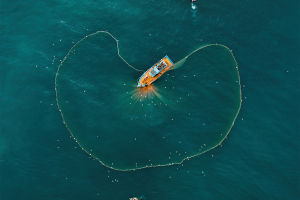In the era of rapid development of modern science and technology, the flight of paper airplanes seems insignificant.
However, many enthusiasts and engineers have created the world's most powerful paper airplanes through research and practice, challenging the limits of flight.
Many factors affect the flight distance of paper airplanes, including the design of the aircraft, folding techniques, the quality of the paper used, and the force and angle of throwing.
According to statistics, the current record for the longest paper airplane flight in the world was created by Japanese Yoshiaki Sato in 2012, when his paper airplane flew 69.14 meters (226 feet) in the air.
To achieve such a flight effect, Yoshiaki Sato used fine origami techniques and optimized every detail of the aircraft, including the shape and angle of the wings.
Through a deep understanding of aerodynamics, the aircraft he designed is not only light but also has a good air streamline, which can effectively reduce air resistance and achieve a longer flight distance.
Making a paper airplane is not complicated, but if you want it to fly far, you need to master some basic skills. First of all, it is very important to choose the right paper. Regular A4 or printer paper are good choices, but for better results, try using thin paper, such as book pages or special origami paper.
Secondly, the accuracy of the folding directly affects the performance of the paper airplane. When folding, make sure each crease is as flat and symmetrical as possible.
Next is the folding tutorial for the paper airplane. First, place an A4 paper horizontally, fold it in half along the center line, and then unfold it to make the crease clear. Next, fold the top two corners of the paper toward the center line to form a triangular tip.
Then, fold this tip down until it is flush with the bottom edge of the paper. Next, take the two sides of the paper and fold it back to the center line to form a more delicate nose. Then, fold the paper in half again from the center line so that the nose faces outward.
The last step is to fold the wings. Depending on your design, you can fold the upper part down at about a 45-degree angle to form the wing. In this step, make sure the wings on both sides are the same size and parallel to the fuselage. When you are done, open the wings and the basic shape of the paper airplane is complete.
When throwing a paper airplane, grab the bottom of the airplane and choose a moderate throwing angle. Generally speaking, a throwing angle of about 30 degrees can allow the paper airplane to fly farther in the air. When throwing, use even force and do not use too much force to avoid deformation of the airplane.
The flight of a paper airplane is not just a simple entertainment activity, it also contains scientific principles and origami art. With the continuous advancement of paper airplane design and folding technology, flight records are constantly being broken.
By understanding this knowledge, we can not only enjoy the fun of origami but also feel the charm brought by science. Whether in the park, school or at home, folding a paper airplane by hand and experiencing the fun of it flying in the air is a simple and beautiful life experience.


